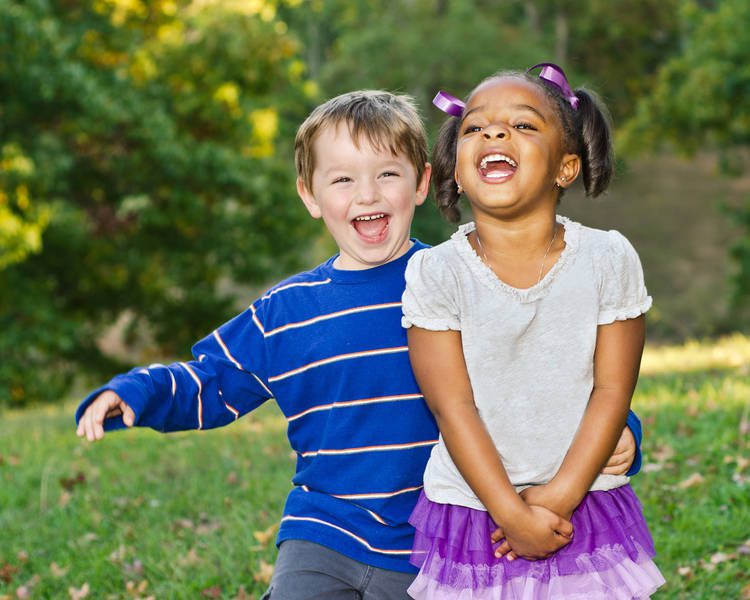Explaining differences to promote understanding.
Q: Last week at the playground, my toddler pointed at another child and said, “Look at their skin! It’s so brown.” I was really embarrassed and didn’t know what to say. If it happens again (and it might!), do you have suggestions?
A: Your initial reaction might be to stand there in shock or grab your kid and make a fast exit. Hold that thought – there’s a better way.
The first thing to remember is that you are not a “bad” parent and your child is not a “bad” kid for noticing differences. In fact, noticing differences—in everything—is a big part of their early learning. This is how children learn about matching, patterns, and understanding their world in more complex ways.
But let’s keep it real. It can be embarrassing when the difference they’re noticing is about an aspect of another person’s appearance. Here’s what to do:
Acknowledge your child’s comment:
“Isn’t it amazing that we all have our own special color of skin? Let’s look around and see what other skin colors we notice.”
(For a comment about appearance: “We are all different sizes.” Or: “Our eyes are all different shapes.” Or: “We all have different hair.” For a comment about a wheelchair: “People have different ways of moving around.”)
Stay calm and matter-of-fact.
While it’s tempting, shushing your child tells them that differences are a bad thing or that this is a forbidden topic. The goal is to keep the conversation going (over years) to help your child develop a more complex understanding of race and bias.
Provide more information:
“People have different skin colors because of something called melanin in our skin. The more melanin you have, the darker your skin is. People are the same in many ways—we all make friends, laugh at jokes, and have families. But there are some ways we are different too. We may have different skin color, different eye color, or different hair.”
Share your family’s beliefs:
“Sometimes people are treated differently because of their skin color. That is not fair. And it’s not kind.” As your child grows older, their observations may feel more judgmental or mean-spirited, perhaps repeating something negative they’ve heard peers or others say. Being clear about your family beliefs, and the harm caused to others by bias, is an important way you can shape your child’s thinking about their own words and actions.
While these moments may never be easy, having a plan for how to respond will help you find the words. And your response matters a lot because your child is learning what they can ask you, what you’re willing to discuss, and when they can turn to you. Keeping the conversation going helps you build your child’s understanding of the world, and all the people in it.
This article is part of a series on Parenting for Social Justice. For more, visit zerotothree.org/parentingforsocialjustice.





